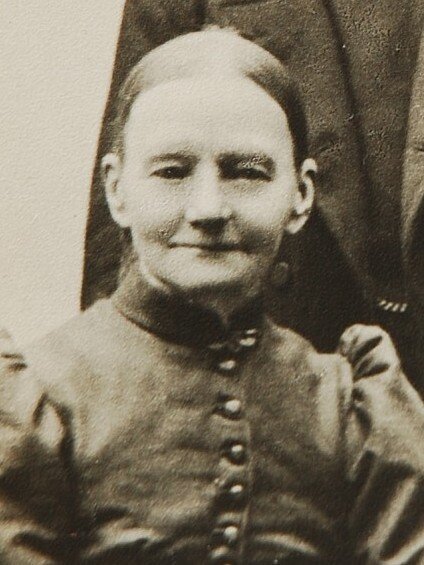Top 10 Historical Beheadings
Suggested by SMSBeheading is the oldest form of execution known to man. Since the beginning of time, those convicted of crimes were sentenced to death by decapitation. These sentences were carried out by hand, until the time of the French Revolution. It was then, in 1791, that Joseph-Ignace Guillotine, invented the death machine that bore his name. Yet, even in this day and age, many lands still carry out this sentence with swords and axes. It’s very rare that a guillotine is used because it is believed to be outdated….
Many historical beheadings weren’t always the result of a conviction. Some were plain cruel acts, committed with pure evil intent. There are even instances of political “mistakes” being made, resulting in the execution of innocent people. You would think that with so many other options available to carry out a death sentence, the act of beheading would be lost. Ironically, in many lands, it is still seen as the ultimate punishment for criminals.
Below is a list of 10 beheadings that have taken place over the course of time. Some are familiar, while others are virtually unheard of. Whether they are popular or not, they happened. They should provoke thought and make anyone wonder, how far we have really come as a civilization if this ancient method of death is still being used?
10. Ruyati Binti Sapubi
On June 18th 2011, Ruyati Binti Sapubi was beheaded in Mecca. She was convicted of murdering her employee, Khairiya bint Hamid Mijlid, with a meat cleaver. The woman murdered her boss after she was denied the opportunity to leave the kingdom and return to her family in Indonesia. Ironically, the maid had been being held captive by her employer for 14 years.
The Saudi government issued an apology after the truth of the woman’s hostage situation was revealed. They neglected to inform the embassy of their plan to execute Ruyati. Had they done so, the woman may have been pardoned. Since her execution, the Indonesian government has put a halt to exporting workers to Saudi Arabia. The Saudi government has vowed to no longer carry out executions of foreign workers without first contacting the consulate or embassy, to avoid another future mishaps of this nature.
9. Thomas More (1478 – 1535)
Known to the Catholic Church as Saint Thomas More, this man wore many hats; he was a lawyer, an author, an advisor of Henry VIII and Lord Chancellor. Seen as a martyr by the church, he spoke in opposition of the Protestant reform. He also made no secret his thoughts on Martin Luther or William Tyndale. Of all of the things he did for the Catholic Church, he will always be remembered for publicly opposing the King’s separation from the church and his refusal to accept him as the church’s head.
The beheading of Thomas More was rather senseless in the mind of many. In 1533, he rejected an invitation to the coronation of Anne Boleyn; who as the King’s wife, was to be crowned Queen. This act of rejection wasn’t considered treason since More had put his acknowledgement of her queen-ship on paper. However, King Henry wasn’t pleased with his behavior and chose to act in response.
More was soon charged with the crime of accepting bribes. The false charges were dropped since he had a fierce reputation as an immovable judge. The following year, he was charged with conspiracy. It was alleged that he had teamed up with a nun who “foresaw” the end of the king’s rule. Those charges were also dropped when evidence that he had told the nun to refrain from interfering with the king’s affairs was produced.
With all of the attempts to bring something against More failing, there was little left to do. The presence of Thomas More was requested before the commission. He was instructed to proclaim his allegiance to the Act of Succession. He was willing to accept Parliament’s choice to make Boleyn queen but he would not swear his allegiance to the relationship that the Kingdom and the church had; he was a firm believer of Papal Supremacy. He also openly rejected the king’s annulment from his former wife, Catherine. All of these things led to him being charged with, tried for and found guilty of treason. Thomas More was ordered to death by beheading.
8. Anna Mansdotter
Anna Mansdotter played a part in one of the most famous murder cases in Sweden. Along with her son, Per Nilsson, she murdered a woman. The woman was her son’s wife. Both parties involved in the crime gave multiple stories. None of them were ever the same. No one was ever able to find out the motive behind the murder.
However, years after the murder, many people began to say that Anna may have committed the crime on her own. These suggestions were based on the fact that during the trial, an incestuous relationship was revealed. It was believed that Anna Mansdotter was jealous of the relationship between her son and his wife. Also, because of the unnatural relationship between mother and son, the bond that they shared was strange. People familiar with the case believe that the murder may have been carried out by Anna, but she did so with the blessing of her son. On August 7th 1890, Anna Mansdotter was the last woman to be executed in Sweden.
7. Anne Palles
At the age of 74, Anne Palles was the last witch to be legally put to death in Denmark. The crime that she was charged with was sorcery.
In 1962, Anne was named amongst many others by a woman who was being accused of poisoning a man. During her questioning, she confessed practicing magic and provided authorities with the names of her 3 partners. She also have them a list of nearly 100 clients.
That same year, Anne was accused of multiple crimes; using magic to enchant a bailiff, murder and destroying a man’s crops after he forced her son to join the military. When her trial began, Anne confessed to being a witch, having met Satan, having help from her “familiar” and attending the Witch’s Sabbath. She was sentenced to death based on her own confession.
After her sentencing, Palles tried to recant her statements. She revealed that she only made the confession because she was tortured during her stay in prison. Anne stated that before her trial even began, she was interrogated by the priests; who were awaiting her arrival at the prison. The priests had threatened to remove her tongue if she said anything different once her trial began. With her sentencing already passed down, Anne’s pleas went unheard. And her sentence to die was carried out. People accused of sorcery were usually burned alive. However, it was ordered that Anne be beheaded prior to throwing her body on the stake. The other women were simply set ablaze.
6. Amina bint Abdulhalim Nassar
In December of 2011, Amina Nassar was beheaded after being charged and convicted of practicing witchcraft. It was reported that the Saudi woman called herself a healer and would sell vials of unknown liquids and veils to clients who believed she had healing powers. She made $400 from each sale. Upon investigation and searching her home, authorizes discovered Amina’s witchcraft books, veil, bottles and liquids. She was tried and sentenced to public death. The decision was supported by all judicial systems.
5. Marisol Macias Castanedas
In 2011, the beheaded body of Marisol Macias Castanedas, was found close to the U.S. border. Marisol was an editor for a Mexican newspaper. Her head was placed atop a large rock and her body sprawled in the grass, nearby. A poster board with a handwritten note was found with the body, as a warning.
Mexican drug cartels, the Zetas, were believed to be responsible for the gruesomely violent death. It was said to be in retaliation for comments that Castanedas had posted on a social networking site. Marisol often used her social network pages to voice her opinions and share her points of view. This act of “free speech”, proved to be a deadly choice for the budding newswoman.
4. Daniel Pearl (1963 – 2002)
Another tragic, yet historic, beheading that occurred during in the 21 century. Mr. Pearls an American journalist for the Wall Street Journal. Serving as the South Asia Bureau Chief, he was stationed in India. On a trip to Pakistan, to research possible connections between the Richard Reid and Al-Qaeda, Daniel was kidnapped and beheaded.
There will never be any clarity as to who was truly responsible for his death. In the summer of 2002, one man was sentenced to hang for the crimes against Pearl. However, in 2007, a prisoner in Guantanamo Bay assumed personal responsibility for the beheading of Pearl. Even after this confession, more men were alleged to be connected to the crime. Who did it is irrelevant. It was another example of senseless cruelty, carried out by a terrorist cell.
3. Eugene Armstrong
This beheading has been etched into history. Senseless and pure evil, it’s the beheading death of Eugene Olin Armstrong. Mr. Armstrong was a construction contractor, employed by Gulf Supplies Commercial Services of the United Arab Emirates. On September 16th 2004, “Jack” (as he was lovingly known to those who loved him), was kidnapped by a terrorist cell. He was held hostage with two other Americans.
Four days after being taken hostage, Eugene Armstrong was beheaded by militant groups. One man, Abu Musab al-Zarqawi, was proud to take responsibility for the beheading of this innocent man. A video of the horrific crime was placed on the World Wide Web for all to see. This heinous act was clearly an act of terrorism that was meant to get the message of Al-Qaeda’s intent to continue their war against those people believed to be their oppressors.
2. Marie Antoinette (1755-1793)
Marie Antonia Josepha Johanna was born on November 2nd, 1755. She was the fifteenth child of Maria Theresa and the Holy Roman Emperor, Francis I. At the age of 15, on the day she married Louis-Auguste, she became the Dauphine of France. She became the Queen of France and Navarre at the age of 19 when her husband, Louis XVI, took the throne after the death of Louis XV.
Once thought to be charming and beautiful, the people of France eventually began to dislike Marie Antoinette. They considered her to be reckless and “loose”. They also felt that she was too sympathetic to the country’s foe; which unfortunately happened to be her homeland, Austria.
It was during the French Revolution that the royal family was forced to flee to after the royal Varennes due to attempts to abolish the monarchy. Within 24 hours, the royal family was captured and held in the Temple Prison. There were many schemes concocted to break her out of prison but Marie refused them all. On October 16th 1793, Marie Antoinette was convicted of treason and beheaded at the guillotine; just nine months after the execution of her husband.
1. John the Baptist (c. 6BC – c. 30-36)
This is undoubtedly the most famous beheading in the history of the world. John the Baptist was a traveling preacher and a great figure in many religions. Some Gospels describe him as a relative of the man known as Jesus. This iconic religious figure is considered by many as the thriving force behind the baptismal movement that took place along the Jordan River. He was considered a prophet in many faiths; including Christianity, Islam, Baha’i and Mandaeism. John the Baptist is also the man who baptized Jesus Christ; an act that opened the gates of heaven.
According to the Gospels, John was thrown into prison for criticizing King Herod’s marriage to Herodias; who was once the wife of his brother. This was a direct violation of an Old Testament law. Further along in the Gospel, Herod’s stepdaughter (Salome) performs as dance for the King. In return for her performance, Herod offers a favor. Her mother, Herodias, instructs the young girl to request the head of John the Baptist…on a plate.
However, many historians believe that Herod ordered the beheading of John the Baptist because he had too much influence over the people. He had the power to cause rebellion. To avoid a revolution, Herod felt the best thing to do was remove the threat. Either way, this will remain the most famous beheading in history. All of these years later, reference to the beheading of John is made on a regular basis. It’s the source of the phrase, having someone’s “head on a platter”.
As you can see, some of these beheadings are very well-known. They are spoken of often and referred to on a regular basis. There are many beheadings that may always be considered some of the most famous decapitations to ever take place. Others, although less popular, are linked to circumstances that have made their marks on the world; such as witch hunting and accusations of sorcery. As inhumane as it may be, it seems that the act of beheading will not only be a part of the world’s history; but it will be a part of its future as well.




















designers guild promo code
Top 10 Historical Beheadings
gmail sign in inbox gmail account
Top 10 Historical Beheadings
hotmail messenger sign in
Top 10 Historical Beheadings
nguyên nhân gây chảy máu cam
Top 10 Historical Beheadings